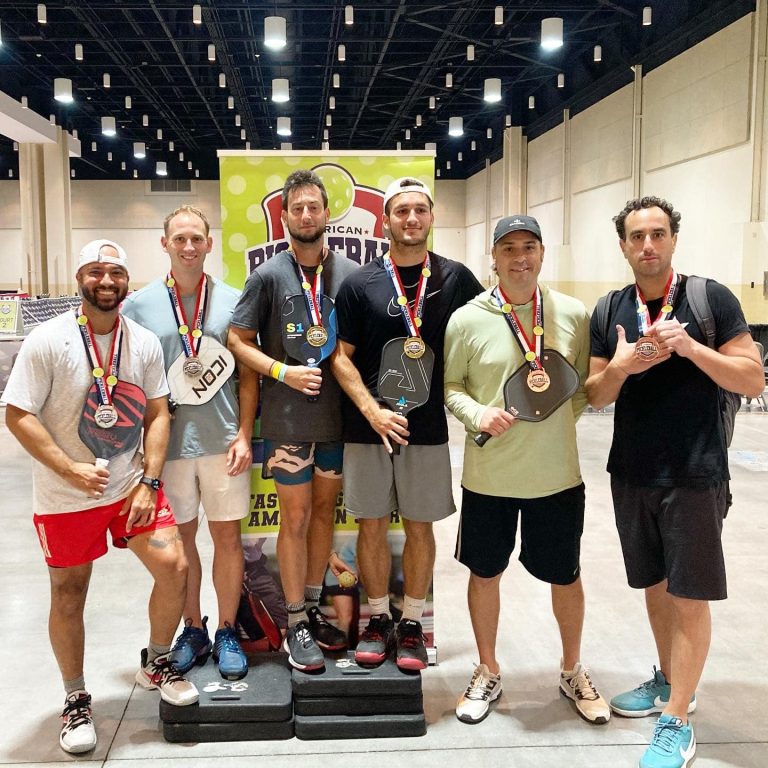Pickleball Resets: Guide to Dominating the Net
Pickleball Resets: The Secret Weapon to Net Dominance
Want to dominate the pickleball net and leave your opponents scrambling? Master the intricate techniques of forehand reset shots.
With perfect pickleball resets, you’ll be able to:
- Control the pace of the game and keep your opponents on their heels
- Force them into errors
- Create opportunities to hit winners
In this comprehensive guide, I’ll cover everything you need to know to hit perfect reset shots, including:
- Footwork and positioning
- Grip pressure
- Body alignment
- Paddle movement
Once you master these techniques, you’ll be unstoppable at the net.
Here’s a sneak peek at one of the key secrets to hitting perfect forehand reset shots:
Keep your paddle face open. This will help you to control the pace of the ball and keep it in the court.
I’ll reveal more secrets in the guide.
The Perfect Reset in Pickleball
A perfect reset shot in pickleball is the linchpin of a strong defensive strategy, turning the tides of the game by landing in the non-volley zone (NVZ) or ‘kitchen.’ The goal is to execute a shot that is challenging for opponents to counter with a winning response and sets up your partner for an offensive play.
Reasons to Hit a Reset
Understanding when and why to hit a reset can be as important as knowing how. Here are some strategic reasons to use this shot:
- To slow the game down and allow your partner to position themselves.
- To compel the opponent to hit a more challenging aerial shot.
- To keep the ball in play and extend the rally for a better chance to win the point.
- To set up a decisive shot for your partner.
- To deliver a deep shot into the opponent’s NVZ, limiting their attack options.
Tips for Hitting a Perfect Reset
Here are some practical tips to help you master the reset shot:
- Keep your paddle ahead of you for better control over the shot.
- Use a soft grip to absorb the ball’s energy and prevent overhitting.
- Keep your swing short and compact to maintain control.
- Focus on placing the ball in the NVZ rather than trying for a winner.
- Coordinate with your partner to set up offensive opportunities.
Understanding the Reset
The reset in pickleball is a nuanced shot designed to defuse aggressive plays and regain the advantage. This article delves into the execution of various reset shots, including footwork, grip, positioning, and stroke mechanics.
Footwork and Positioning
Effective footwork is essential for a successful reset. Maintain a ready stance with your feet shoulder-width apart and knees slightly bent. This position ensures balance and readiness to move in response to the ball’s trajectory.
Grip Pressure
A light grip is key to a soft reset. It allows the paddle to absorb the incoming ball’s energy, which is crucial for a controlled return. Adjust grip pressure as needed to switch between a ‘punch’ or ‘reset’ during play.
Body Alignment and Paddle Position
Align your body to the incoming ball and keep your paddle out in front, using your non-dominant hand for additional support and precision.
Paddle Face Angle and Wrist Control
Manage the paddle face angle to direct the ball. A firm wrist aids in controlling the shot, preventing excessive slicing which can lead to high pop-ups.
Executing the Reset
Focus on redirecting the ball with minimal paddle movement. Avoid swinging and instead let the paddle’s position and your relaxed grip do the work to softly carry the ball over the net.
Different Types of Resets
Mastering various reset shots can enhance your game:
- Soft Arc Reset: Creates a looping shot over the net, forcing the opponent to hit upwards.
- Topspin Reset: Keeps the ball low, making it harder for opponents to attack.
- Slice Reset: Angles the ball away or creates a short, deep bounce, adding variety to your play.
Varying Contact Points
Change where you hit the ball on the paddle face to adjust the shot’s spin and trajectory. Experiment with different contact points to find what works best for each situation.
Using Your Non-Dominant Hand
Use your non-dominant hand not just for balance, but also to guide the paddle and add subtle variations to your resets.
Being Unpredictable
Mix up your reset types, contact points, and paddle handling to keep your opponent guessing and off-balance.
Conclusion
Integrating these techniques into your pickleball resets will make you a formidable player at the net. With practice, you can turn defensive positions into offensive opportunities and keep your opponents in a constant state of adjustment.







